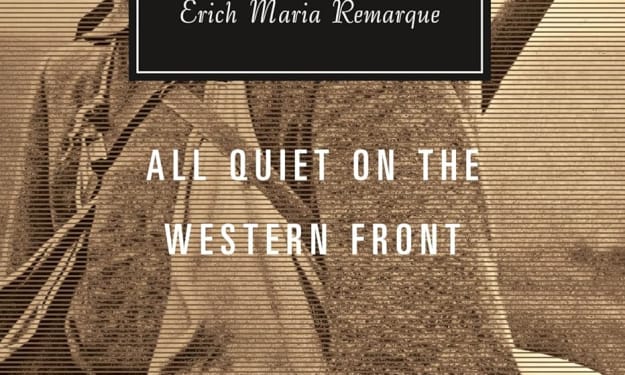Stage Door (1937)
Women’s Dreams, Ambitions and Progress

If I’m going to take my dreams of being a sassy 1940s screen writer seriously I need to take a good hard look at the movies that came before. And that is why I treated myself to Stage Door (1937).
And what a treat it was – a quick, talking, feisty, funny treat of a tightly choreographed ensemble of the best of Hollywood’s female stars, talking to and over each other with neatly timed panache. All of them dripping with sarcasm and always stylishly dressed. It was a balm after all those men telling me women can’t be funny (both the imagined studio executives and some real-life guys). And it was a gently raised middle-finger to the Hays Office saying that women’s roles should reflect some awful, constraining ‘natural’ order.

So here are the bits you to need to know without any spoilers, because the ending packs a punch and I wouldn’t want to ruin that for anyone.
Stage Door (1937) is set in a female-only boarding house, The Footlights Club, for theatrical wannabes in New York. There are eccentrics (one woman has a cat constantly draped around her neck) and archetypes. It showcases the dramatic and comedic charms of Ginger Rogers as Jean, and the haughtiness of Katherine Hepburn as Terry. Their relationship sets up the class dynamic of a Depression era USA.
It is also notable for early screen outings for Lucille Ball and a 14 (!) year old Anne Miller. (She plays a young woman and she more than holds her own amongst the more experienced cast).
It is about the dreams, aspirations, ambitions, talent and luck needed to succeed in the theatrical world. It is clear that despite all the charm and hard work of the female performers, the power to make and break actors is in the hands of male producers and managers. The casting couch, the sleaze, the backstage, underhand machinations are all there. But the focus of the film is the female friendship and camaraderie. The main relationship is not romantic, but platonic between Jean and Terry.
In fact romance is very much off the table, with all heterosexual relationships shown as transactional. And of course there couldn’t be any other kind of relationship on screen – this was during the Production Code’s strictest period.

In many ways the film feels contemporary. A #metoo for the 1930s theatre.
In the 1980s Alison Bechdel in her comic strip Dykes to Watch Out For provided criteria by which to justify seeing a film. This became known as the Bechdel Test and the rules are:
• The movie has to have at least two women in it
• Who talk to each other
• About something other than a man
And Stage Door (1937) passes that test with flying colours.
In Dykes to Watch Out For the characters couldn’t find such a film. It says something about the convoluted path that progress takes that a test devised in the 1980s could be passed in the 1930s but not in the 1980s.

Bechdel isn’t the only movie test to check out female representation. Sometimes, we have to start with the basics. There is the Sexy Lamp Test, which simply states can a female character be replaced with a sexy lamp? In other words, do the actions of the woman matter? Can she make choices? And do those choices make a difference to the plot? Stage Door (1937) passes, whereas many Bond girls of the 1960s and 1970s don’t – progress is not linear.
Then there is the Mako-Mori Test which asks, do any of the female characters have a character arc and is that arc independent from a male character arc or does it simply support someone else’s character development. Both Jean and Terry grow and learn in Stage Door (1937). Gravity (2013) passes (although wouldn’t pass the Bechdel Test). But Elizabeth Town (2005) and its archetypal Manic Pixie Dream Girl wouldn’t pass, because as with many rom-coms, the female character is there for the growth of male understanding – not for any growth of her own.
There is the Furiosa Test – that suggests if the film incites a misogynistic boycott it works as a feminist provocation. Contemporary reviews of Stage Door don’t suggest this was a problem – but hey the reboot of Ghostbusters (2016) definitely passed this test.
The Smurfette Principle highlights tokenism – if there is only one woman in an entirely male cast or one heroine in a band of heroes that is about ticking boxes rather than representation – suggesting that men are the standard and women are the outsiders. Stage Door (1937) not guilty – but The Avengers (2012) struggles with this.
There are plenty of equality tests outside of female representation that Stage Door doesn’t get near. The Racial Bechdel Test in which a film not about ‘race’ has characters of colour amongst the principal cast – is one example. Only one black actor was noted – a delivery boy – ouch!
The Jenni Gold Test – does the content include a disabled character who is not defined by their disability – no and no.
The Topside Test for trans literature asks is there a trans character who talks about something other than medical transition. And then there is the Vito Russo Test – which acts like a Gay Sexy Lamp test. Is there a lesbian, gay or bisexual character who has a role in the plot?
And Stage Door does not pass either of those tests. And of course it couldn’t because of the Production Code – which declared homosexuality as “sexual perversion” and not permissible on screen.
And yet…

Stage Door is not a heteronormative film – by which I mean this is not a film that suggests heterosexual marriage is the grand ideal. As I said, all the heterosexual dating arrangements are transactional – men wanting sexual favours, women wanting advancement, women needing a man to pay for dinner, man wanting a pretty girl on his arm, etc. None of the women are actively seeking male companionship for its own sake. Both Jean and Terry keep their affection for men in check. This is a film about female connections. And the final hug, which is suggestive of a lifelong commitment, is between two women.
It is definitely possible to read the film as a coded display of female love.

All my talk of tests for equality – well, isn’t that just some showy broad letting us know she can do clever. (The guy who says this is looking over my shoulder as I type and he is huffing a cigar with no regard for how it might make my dress smell).
Well, no. The importance of these tests is that they give us, the audience, a language to put to our discomfort. The studio bosses don’t like it, because if we can name something we can change it.
After all, isn’t that what the Production Code hoped to do. By naming homosexuality as a perversion – it hoped to change its portrayal. But Stage Door is quietly, charmingly and disarmingly undermining that attempt. It is saying female camaraderie matters because sometimes it’s all women have got. And sometimes it’s because it is all women want.

If you've enjoyed what you have read, consider subscribing to my writing on Vocal. If you'd like to support my writing, you can do so by leaving a one-time tip. Thank you.
About the Creator
Rachel Robbins
Writer-Performer based in the North of England. A joyous, flawed mess.
Please read my stories and enjoy. And if you can, please leave a tip. Money raised will be used towards funding a one-woman story-telling, comedy show.
Enjoyed the story? Support the Creator.
Subscribe for free to receive all their stories in your feed. You could also pledge your support or give them a one-off tip, letting them know you appreciate their work.






Comments (2)
I have never seen this movie, but your piece stands even if I haven't. I love your insight, and this is very well written.
I like this film a lot! Apparently there were so many writers on it that it got dubbed "Screen Door" (I think there were 7 of them, in and out the door). I love the performances - and I love your insight looking at it through the lenses of the various tests!